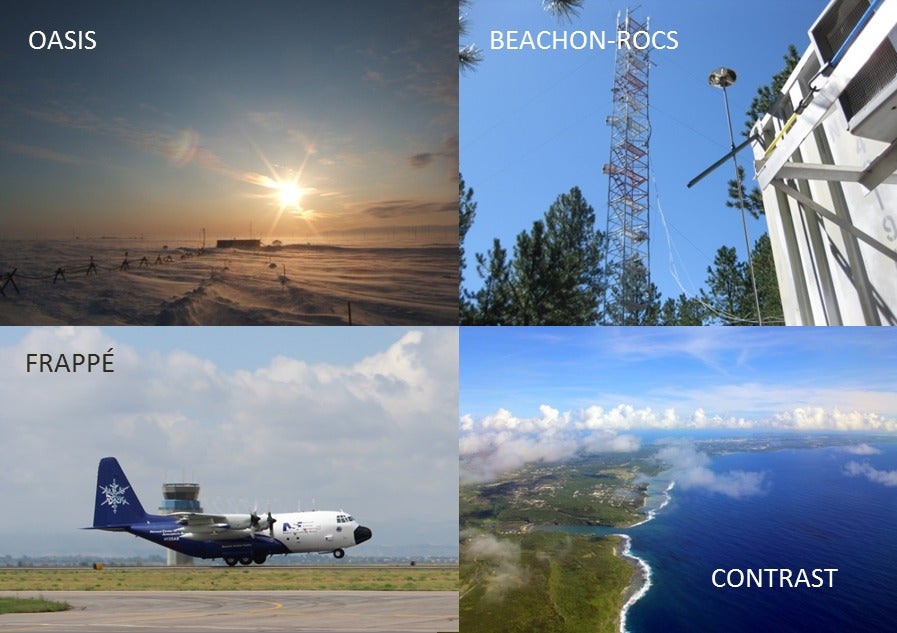VOC Measurements Group
The VOC measurements group, led by Dr. Eric Apel, strives to be a world leader in the measurement of volatile organic compounds (VOCs) and the interpretation and synthesis of these measurements in the full context of atmospheric chemistry. A main goal of our research is to participate in collaborative efforts to quantify the chemical composition of the atmosphere, characterize how it is changing in response to natural and anthropogenic forcings, and ultimately, develop the capability to predict changes that may have important implications for the health of Earth’s ecosystems. We have developed expertise in the development and deployment of instrumentation to measure a suite of VOCs (non-methane hydrocarbons, oxygenated VOCs, nitriles, halocarbons, etc.) that directly impact the chemistry of the troposphere and lower stratosphere or serve as tracers for source regions, transport and other atmospheric processes. Our Trace Organic Gas Analyzer (TOGA) is a state-of-the-art online fast Gas Chromatograph-Mass Spectrometer (GC-MS), developed for use aboard aircraft, that measures more than 70 species with very low detection limits approximately every two minutes. As a requestable instrument since 2012, the TOGA has been deployed on many NSF and NASA field campaigns. Our newest TOGA system, the TOGA-TOF, includes a High Resolution Time-of-Flight Mass Spectrometer (Tofwerk), dramatically increasing the number of species that can be quantified by TOGA instrumentation. The TOGA-TOF was deployed for the first time in 2019 during the joint NASA/NOAA FIREX-AQ airborne campaign.
We provide leadership and assistance to the community by sharing our knowledge of VOC measurement and calibration techniques. This started with the NOn-Methane Hydrocarbon Intercomparison Experiment (NOMHICE), an IGAC-sanctioned, NOAA-sponsored program that involved evaluating the performance of laboratories around the world conducting hydrocarbon measurements and publishing data on the measurements. NOMHICE was a designed to bring participating laboratories to a level of expertise so that measurements of hydrocarbons by different groups around the world are accurate and comparable. Evaluations were carried out on state-of-the-art technology for collection, analysis, and storage of hydrocarbons. This capability remains in our laboratory. As a result of this program we have a series of NIST-certified VOC standards at the ppb through ppm level and have developed the capability for making highly accurate VOC calibration standards. We have cross-calibrated all of our standards and have in the past made these available to the community. We retain all of the instrumentation and capabilities that resulted from this program.

Clockwise from top left: OASIS-2009 sampling site in Barrow, Alaska; Measurement Tower at Manitou Experimental Forest near Woodland Park, Colorado during BEACHON-ROCS; the NSF/NCAR Gulfstream V returning to Guam at the end of a CONTRAST flight; the NSF/NCAR C-130 takes off at the Rocky Mountain Metropolitan Airport in Broomfield, Colorado during FRAPPÉ.